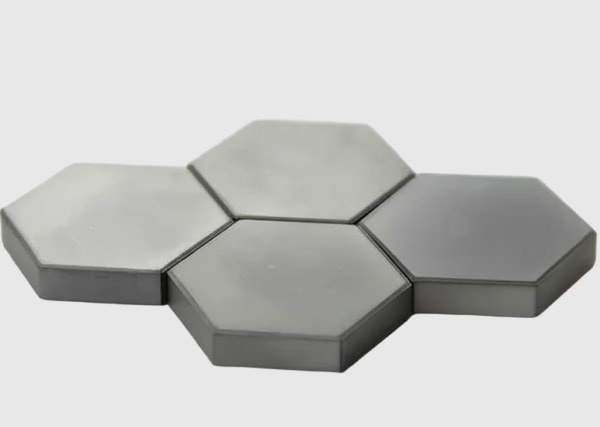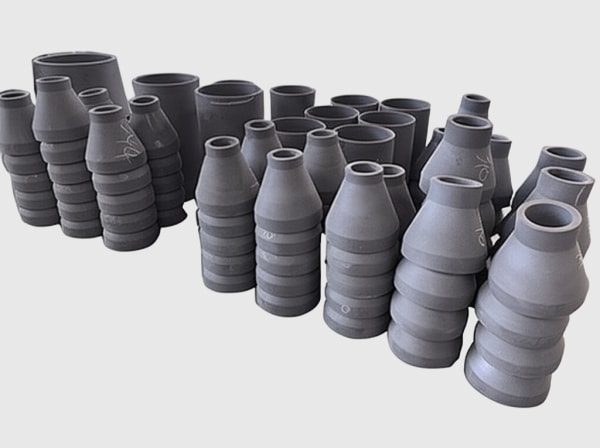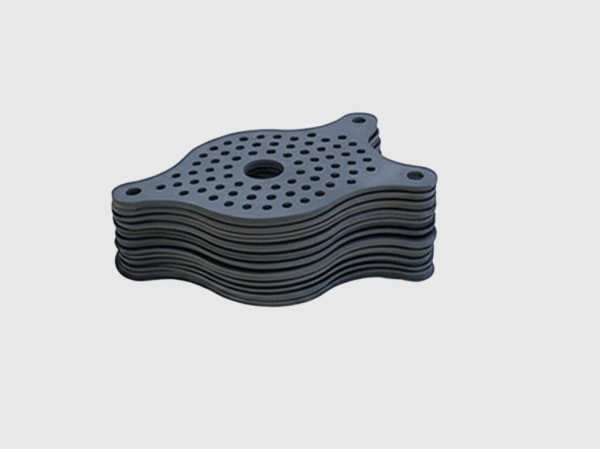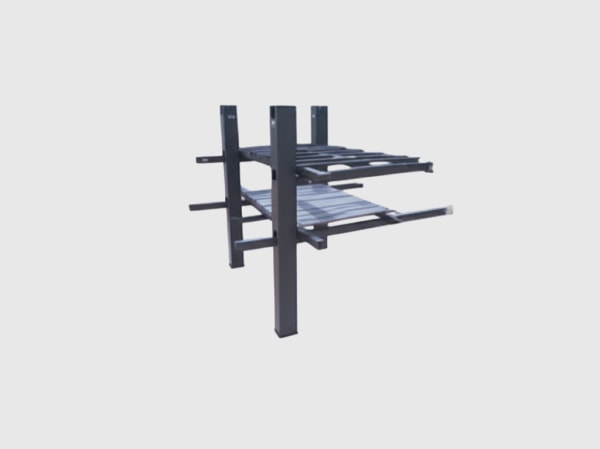Sicarbtech — Silicon Carbide Solutions Expert
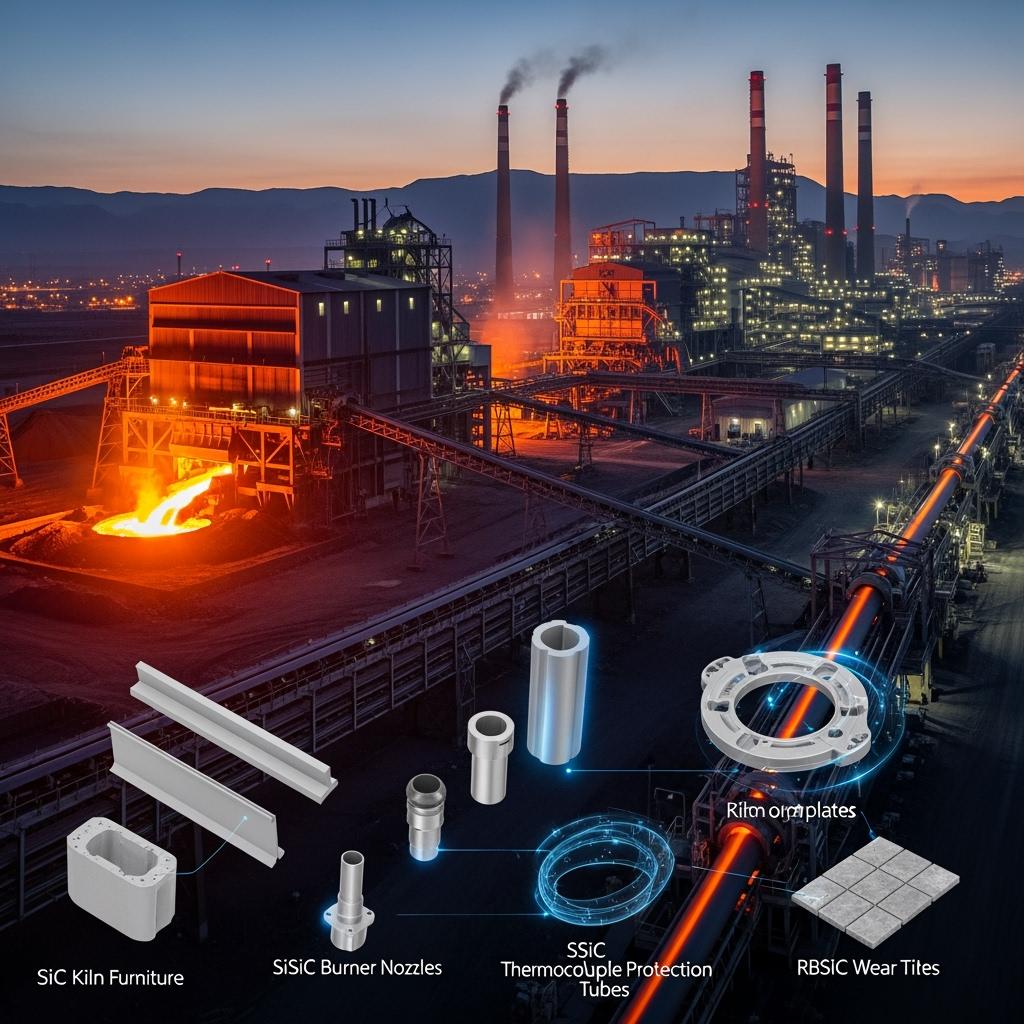
Executive Summary: 2025 Outlook for Silicon Carbide in Chile’s Metallurgical Operations
Chile’s metallurgical sector enters 2025 balancing three imperatives: meet copper output targets, decarbonize thermal processes, and stabilize costs amid FX volatility. Smelters, refineries, foundries, and rolling operations from Antofagasta to Biobío are modernizing furnace assets, uprating burners for lower NOx, and shifting thermal lines to hybrid gas-electric configurations. The common constraint is materials performance at heat. Traditional refractories and metallic components struggle with rapid ramp rates, corrosive off-gases, and chloride-bearing atmospheres from recycled inputs. In this environment, custom silicon carbide (SiC) ceramics—R-SiC, SSiC, RBSiC, and SiSiC—are delivering measurable gains: geometry that holds under heat, surfaces that resist oxidation and spalling, and fixtures that remain flat through long campaigns.
Sicarbtech, located in Weifang City—China’s silicon carbide manufacturing hub and a member of the Chinese Academy of Sciences (Weifang) Innovation Park—brings more than a decade of SiC customization to Chile. Supporting 19+ enterprises, we offer a full-cycle model from powder processing to precision finishing, backed by ISO 9001-aligned QA and REACH/RoHS declarations. Our turnkey technology transfer and factory establishment services enable domestic production of kiln furniture, burner components, radiant elements, and wear parts, reducing lead-time risk and CLP exposure while aligning with DS 594 occupational safety requirements.
Industry Challenges and Pain Points in Chile’s Metallurgical Value Chain
Chile’s metallurgical plants operate under intensified thermal and chemical stress. Rapid heat-up and cooldown cycles—driven by hybrid firing, peak-shifting with renewables, and tight maintenance windows—generate thermal gradients that warp metallic fixtures and crack conventional ceramics. Shuttle and roller kilns handling anode materials and high-value components suffer from setter plate warpage and beam bowing, which disrupts airflow and temperature uniformity, increasing scrap and rework. Furthermore, oxygen-enriched firing to raise throughput intensifies oxidation, while sulfur- and chloride-bearing off-gases from concentrates and secondary feeds attack metallic radiant tubes and burners, forming scale that flakes and contaminates product surfaces.
Operationally, the costs compound. A few tenths of a millimeter of bow in a long kiln beam cascades into uneven loading, hot spots, and temperature spread that quietly erodes yield. Metallic radiant tubes lose emissivity as scale builds, driving up energy consumption and extending cycle times. Burner nozzles that creep or distort under prolonged service destabilize flame shape, raising NOx and causing cold spots that elevate fuel use. Maintenance teams working under DS 594 constraints must minimize confined-space entries and heat exposure; every premature changeout increases safety risk and cost in CLP terms.
Supply chain variability adds another layer. Specialty alloys with export lead times and USD linkage leave plants exposed to currency swings and delivery uncertainty. In contrast, engineered SiC with documented tolerances, flatness, and straightness enables predictable replacement intervals and confidence in spares planning. As Eng. Paula Herrera, a thermal processing specialist, notes, “The gap between advertised furnace efficiency and real output usually hides in fixtures and radiant components. Geometry that stays true at temperature is the hidden driver of energy intensity and uptime.” (Thermal Processing Review, 2024)
Local regulators and ESG frameworks reinforce this pressure. Emissions permits scrutinize NOx and particulate carryover; HSE audits demand traceability and safe-handling documentation; and corporate sustainability goals require verifiable reductions in energy per ton and maintenance exposure. Procurement teams report that vendor qualification hinges not only on material properties but also on inspection certificates—flatness, Ra, density, and porosity—plus alignment with ASTM C testing, ISO 21940 for rotating parts where relevant, and clear traceability from powder lot to finished serial.
Advanced Silicon Carbide Solutions Portfolio Tailored for Chilean Metallurgy
Sicarbtech’s portfolio maps SiC grades to the dominant failure modes in Chile’s metallurgical duty.
R-SiC is the backbone for kiln furniture—long-span beams, setter plates, saggars, and fixtures—thanks to its low creep rate and oxidation stability above 1400°C. In shuttle and roller kilns, R-SiC maintains flatness and stiffness across long campaigns, stabilizing airflow and temperature uniformity.
SiSiC, combining high strength with low porosity, is the choice for burner nozzles, mixing tubes, flame guides, and precision orifice tiles. Its thermal shock resistance and dimensional stability preserve flame shape and mixing quality, aiding NOx reduction and smoother startups.
SSiC, near-theoretical density, is ideal for components demanding chemical purity and oxidation resistance: radiant tubes in aggressive atmospheres, thermocouple protection sheaths, and high-emissivity fixtures. It maintains surface integrity and emissivity longer than alloys, enabling faster heat-up and consistent radiative transfer.
RBSiC offers outstanding thermal shock tolerance and manufacturability for complex wear components near high-temperature inlets—chute liners, transfer tiles, and abrasion-resistant forms where impact and heat combine.
What differentiates Sicarbtech is process mastery. Proprietary binders, controlled dewaxing, pressureless sintering, and reaction-bonding schedules deliver uniform grains and low residual stress, enabling thin-walled yet stiff designs. Precision grinding and lapping achieve flatness and straightness on large geometries; edge radii are engineered to reduce stress concentrations. Our application engineers co-develop geometries with Chilean operators, tuning cross-sections for stiffness-to-mass efficiency and rib patterns for airflow. Documentation—ISO 9001 QA records, REACH/RoHS, ASTM C mechanical and microstructural data—integrates smoothly with DS 594 audit packs.
Material Performance in Chilean Metallurgical Duty: SiC versus Conventional Choices
Technical Properties Under High-Temperature, Shock, and Corrosive Atmospheres
| Property and Duty Context | R-SiC | SSiC | SiSiC | 7272: RBSiC | High-Temp Alloys (310/330 SS) | Alumina (92–99%) | Graphite/Carbon |
|---|---|---|---|---|---|---|---|
| Max Continuous Service Temperature (°C) | 1500–1600 | ~1500 | 1450–1500 | 1400–1450 | 900–1100 | 1000–1200 (load-limited) | >2000 (inert) |
| Creep Resistance at 1400°C | 素晴らしい | 非常に良い | 非常に良い | グッド | Poor–Moderate | 中程度 | Good but oxidizes |
| 耐熱衝撃性 | 非常に良い | グッド | 非常に良い | 素晴らしい | 中程度 | 中程度 | Excellent (oxidizes in air) |
| Oxidation/Corrosion in SOx/Cl Atmospheres | 素晴らしい | 素晴らしい | 非常に良い | 非常に良い | Moderate; scaling/carbide | Variable; glaze risk | Poor in oxidizing |
| Emissivity Stability at Heat | High, stable | High, stable | 高い | 高い | Declines with scale | Low–Moderate | High initially; oxidation loss |
| 7258: 密度(g/cm³) | 2.9–3.1 | 3.1–3.2 | 3.0–3.15 | 2.9–3.1 | 7.8–8.1 | 3.6–3.9 | 1.6–1.9 |
| Typical Service Life Gain (Chile) | 2–3× vs alumina | 2–3× vs alloys | 2× vs cast refractories | 1.5–2.5× vs alumina | ベースライン | ベースライン | Context-dependent |
In oxygen-enriched or sulfur-bearing furnaces, SiC’s oxidation resistance and emissivity stability preserve heat transfer and geometry where alloys scale and alumina glazes or creeps. RBSiC’s shock tolerance mitigates damage during rapid ramps and power fluctuations common in hybrid-fired lines.
Precision, Flatness, and Fitment Benchmarks for Furnace Internals
| Component Class | プロセス段階 | Flatness/Straightness | Integration Note for Chilean Plants |
|---|---|---|---|
| Long kiln beams (R-SiC) | ±0.3–0.5 mm over 1500–3000 mm | Bow ≤0.5–0.8 mm per 2 m | Preserves rack alignment and airflow uniformity |
| Setter plates/saggars (R-SiC/SiSiC) | ±0.1–0.3 mm | Flatness ≤0.15–0.25 mm per 500 mm | Reduces warpage, improves temperature spread |
| Radiant tubes (SSiC) | ±0.1–0.2 mm OD/ID | Straightness ≤0.3 mm per 1 m | Stable emissivity; avoids tube collisions |
| Burner nozzles/tiles (SiSiC) | ±0.03–0.08 mm critical bores | Concentricity ≤0.05 mm | Uniform flame and mixing; lower NOx |
These thresholds support first-time fit during compressed shutdowns and maintain process stability between campaigns.
Total Cost of Ownership in CLP for Metallurgical Assets
| Use Case | Baseline Material | SiCグレード | Campaign Length (Baseline → SiC) | Energy/Quality Stability | Estimated 12–18 Month TCO Impact (CLP) |
|---|---|---|---|---|---|
| Kiln furniture for calcination/anneal | High-alumina | R-SiC | 6–9 months → 18–24 months | Fewer hot spots; better uniformity | −20% to −35% maintenance + scrap |
| Radiant tubes in heat-treatment | Alloy 鉄鋼 | SSiC | 9–12 months → 24–36 months | Emissivity stable; faster heat-up | −15% energy; −30% downtime |
| Burner tiles/nozzles in reverbs | Cast refractory | SiSiC | 6–8 months → 18–24 months | Stable flames; lower NOx | Payback in 6–10 months |
These scenarios reflect field experience adjusted to 2025 Chilean energy and labor costs.
Real-World Applications and Success Stories from Chilean Metallurgy
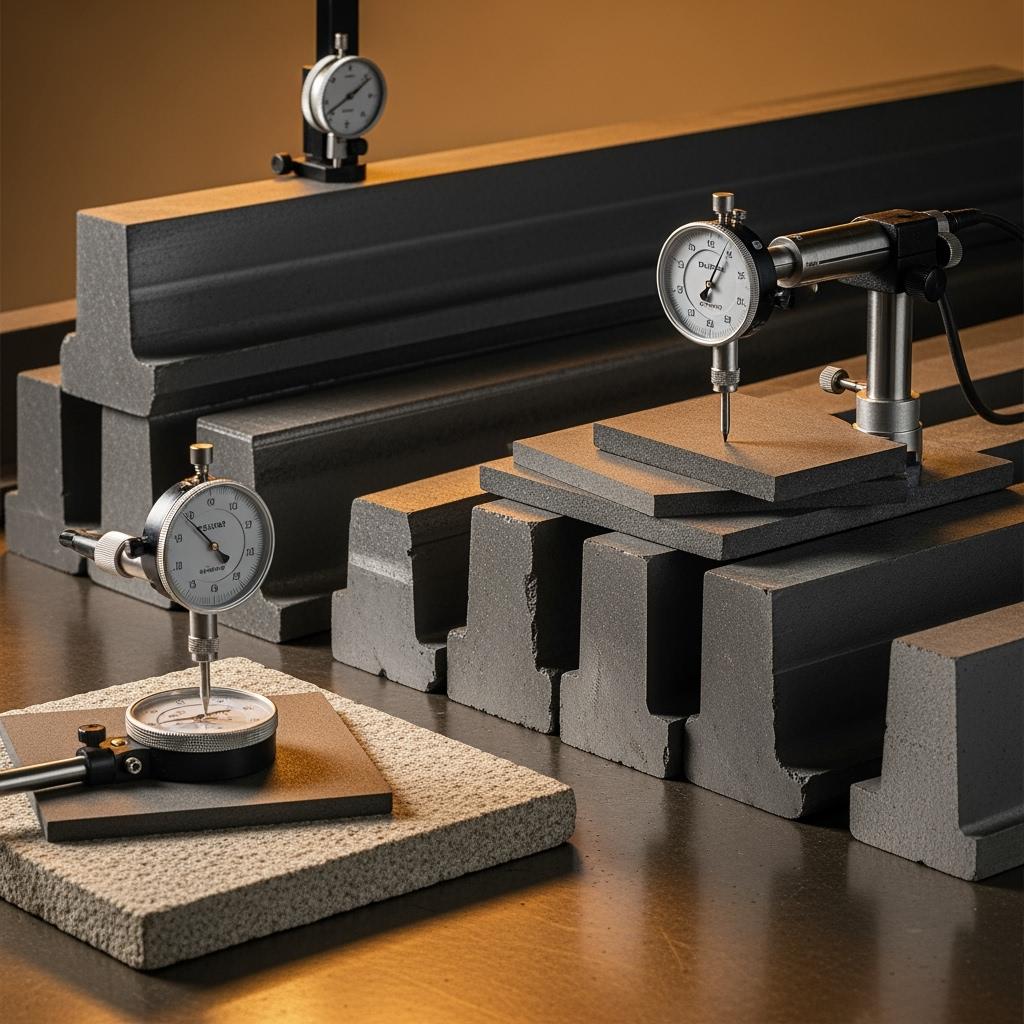
A kiln line supporting copper-associated ceramics in Antofagasta battled beam bowing and plate warpage. After adopting R-SiC beams and setters ground to ≤0.2 mm flatness per 500 mm, temperature uniformity tightened and scrap fell by 22% across two campaigns. Energy per ton decreased by 9% due to stabilized airflow and reduced recirculation.
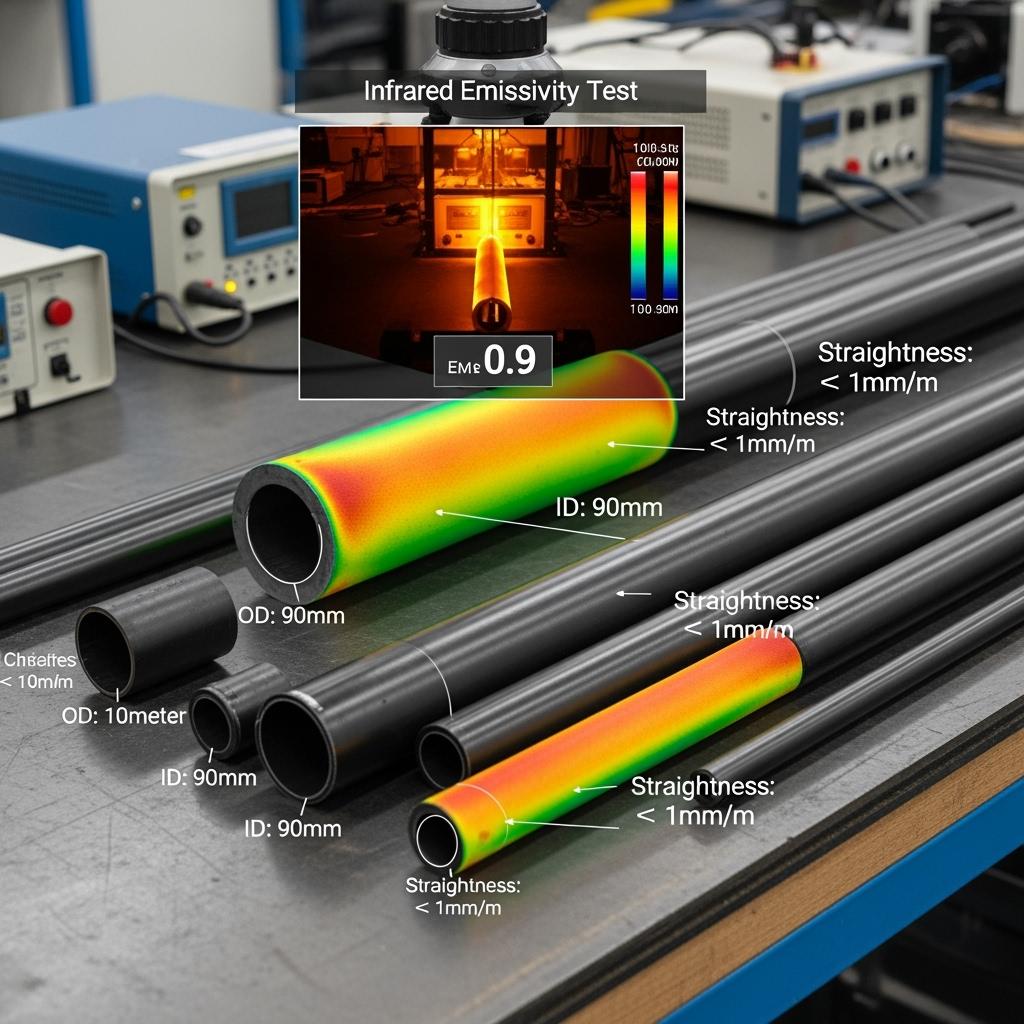
A heat-treatment furnace in Santiago replaced alloy tubes with SSiC. Emissivity remained stable and heat-up time shortened, cutting cycle time by 14%. Unplanned tube replacements dropped by 30% year-over-year, with payback in under nine months despite FX variability.
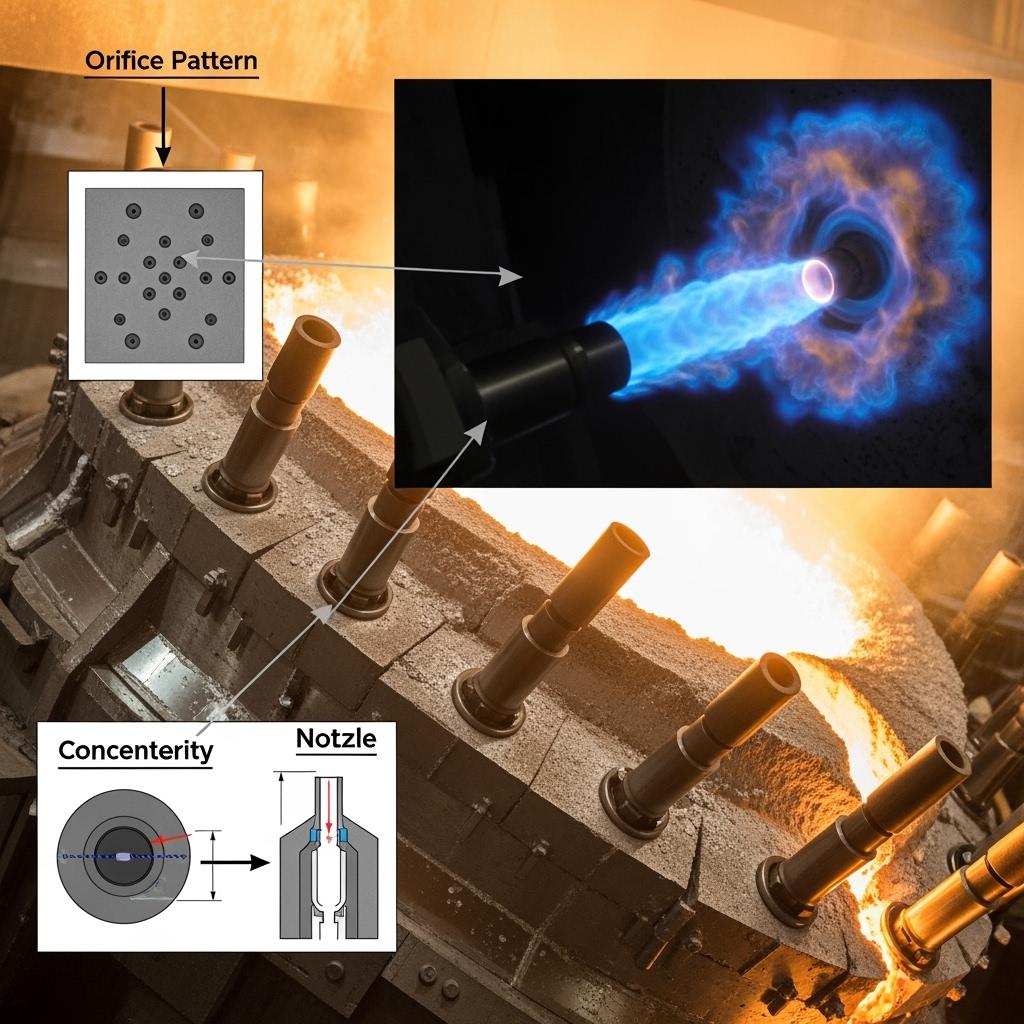
A foundry near Concepción transitioned from cast refractory tiles to SiSiC nozzles machined with precision orifices. Flame stability improved, NOx readings dipped, and hot-spot incidence declined. Operators reported smoother light-offs and fewer flameouts during grid fluctuations.
“Geometry is the first emissive property,” remarks Prof. Tomás Arancibia, editor at Furnace & Refractory Insights (2025 outlook). “SiC that holds shape preserves heat transfer coefficients and combustion uniformity—converting directly to lower energy per unit output.”
技術的利点と現地コンプライアンスによる実装上のメリット
Silicon carbide’s covalent bonding and stable oxide layer yield stiffness at temperature and oxidation resistance in oxygen- and sulfur-bearing atmospheres. Practically, R-SiC beams carry loads without creeping, setter plates remain flat, and SSiC radiant components sustain emissivity far longer than metallic equivalents. SiSiC and RBSiC absorb thermal shocks from rapid ramps and grid-related swings without chipping, reducing the maintenance burden under DS 594 constraints.
Sicarbtech translates these properties into plant-ready results. Finite element analysis guides beam cross-sections for minimum deflection at heat; surface grinding and lapping achieve flatness targets; and concentricity on burner orifices stabilizes mixing. Documentation packs include ISO 9001 QA records, REACH/RoHS declarations, ASTM C mechanical and microstructural reports, and certificates for flatness, straightness, density, porosity, and surface finish. This evidence base streamlines HSE and procurement audits, enabling faster approvals and less commissioning risk.
Custom Manufacturing and Technology Transfer Services: Sicarbtech’s Turnkey Advantage
Sicarbtech’s competitive edge for Chile is a de-risked, end-to-end pathway from concept to sustained operation.
Our R&D, anchored in the Chinese Academy of Sciences (Weifang) Innovation Park, defines proprietary process windows for R-SiC, SSiC, RBSiC, and SiSiC. Controlled binder chemistries, dewaxing ramps, pressureless sintering schedules, and reaction-bonding infiltration deliver uniform microstructures with low residual stress—crucial for long beams, thin plates, and complex burner geometries.
Technology transfer is comprehensive. We provide process know-how and kiln curves; powder specifications with acceptance criteria; SPC templates for critical dimensions, density, and porosity; and preventive maintenance guides. Equipment specifications cover mixers, spray dryers, cold isostatic presses, CNC grinding centers, large-format surface grinders, lapping and polishing lines, coordinate measuring machines, dedicated straightness and flatness rigs, and inline NDT.
Training—delivered in English—spans forming, sintering, machining, lapping, metrology, and QA documentation, with supervisor modules on yield optimization, tool life, and root-cause analysis for defects like edge chipping and warpage. Factory establishment services begin with feasibility studies and CLP-denominated CapEx/Opex models, proceed through plant layout and utilities (power, gas, ventilation, emissions control), and culminate in line commissioning with first-article qualification. We implement ISO 9001 quality systems and support ISO 14001/ISO 45001 adoption to align with Chile’s environmental and occupational frameworks. For export readiness, we assist with REACH/RoHS documentation and provide ASTM C datasets and, where rotating parts are involved, ISO 21940 balance certificates.
Post-commissioning, Sicarbtech sustains performance through quarterly process audits, wear-return and distortion analyses, and iterative geometry updates. Across 19+ enterprise partnerships, this model has delivered 2–4× campaign extensions for kiln furniture, double-digit cycle time reductions via SSiC radiant components, and measurable NOx and hot-spot reductions with SiSiC burners—outcomes validated by certificates and field telemetry rather than claims.
Grade-to-Application Mapping for Chilean Metallurgical Duty
| Chilean Scenario | Recommended SiC Grade | Core Advantages | Expected Operational Outcome |
|---|---|---|---|
| Long-span kiln beams and setter plates | R-SiC | Low creep; oxidation stability; stiffness at heat | 2–3× campaign life; tighter temperature uniformity |
| Radiant tubes and high-emissivity elements | SSiC | Emissivity stability; oxidation resistance | Faster heat-up; lower energy per cycle |
| Burner nozzles, tiles, and mixing tubes | SiSiC | High strength; shock resistance; precision machining | Stable flames; reduced NOx; smoother startups |
| Chute liners and hot abrasion tiles | 7272: RBSiC | Thermal shock + wear resistance | Longer wear life; fewer changeouts |
| Thermocouple protection sheaths | SSiC | Chemical purity; oxidation resistance | Longer sensor life; reliable readings |
Future Market Opportunities and 2025+ Trends in Chile
Three forces will steer SiC adoption beyond 2025. First, decarbonization will intensify hybrid firing and electrification, rewarding components that maintain emissivity and geometry through dynamic ramps. SiC’s stable radiative properties and low mass per load capacity align with this shift. Second, ESG-linked financing will prioritize verifiable reductions in energy intensity and maintenance exposure; SiC’s longer campaigns and audit-ready documentation fit these metrics. Third, localization will accelerate to buffer currency and logistics risk. Sicarbtech’s technology transfer and factory establishment enable domestic production of kiln furniture, burners, and radiant elements with ISO-ready systems, shortening lead times and building strategic capability.
Adjacent markets—including battery materials calcination, specialty alloys, and advanced refractories for renewables co-location—will amplify demand for high-temperature ceramics. As Dr. Beatriz Navarrete writes, “Competitive advantage in Chile’s next industrial cycle will come from materials that keep their shape and emissivity through thousands of cycles.” (Industrial Materials Outlook, 2025) Building on this, procurement is shifting toward lifecycle contracts with KPIs tied to flatness retention, emissivity drift, and NOx stability—an arena where SiC-backed data excels.
よくある質問
Which silicon carbide grade is best for long-span kiln beams and setter plates in Chile?
R-SiC is preferred because it offers low creep and excellent oxidation resistance above 1400°C. It maintains stiffness and flatness across long campaigns, supporting airflow and temperature uniformity in shuttle and roller kilns.
Can Sicarbtech align with Chilean compliance and audit requirements such as DS 594?
Yes. We supply ISO 9001-aligned QA dossiers, REACH/RoHS declarations, ASTM C mechanical and microstructural test data, and certificates for flatness, straightness, density, porosity, and surface finish. Documentation is structured to support DS 594 occupational audits and local procurement templates.
How do SSiC radiant tubes compare to alloy tubes on energy performance?
SSiC maintains high emissivity and resists scaling, enabling faster heat-up and uniform radiative transfer. Plants often record 10–15% cycle time reductions and fewer tube replacements over 24–36 months, with net CLP savings.
Will SiSiC burner nozzles reduce NOx and flame instability?
Precision-machined SiSiC orifices stabilize mixing and flame shape, typically reducing NOx and hot-spot incidence while improving startup reliability under grid fluctuations.
What lead times apply for custom SiC refractory parts delivered to Chile?
Common setter plates and radiant elements ship in 4–6 weeks; large beams or complex burner assemblies require 6–10 weeks. Buffer stock programs and localized production via technology transfer can compress timelines.
How does Sicarbtech ensure flatness and straightness for large components?
Controlled sintering is paired with precision grinding and metrology using CMM and straightness rigs. Typical outcomes include ≤0.8 mm bow over 2 m for beams and ≤0.2 mm flatness per 500 mm for plates, verified by certificates.
Are SiC components compatible with existing furnace designs and supports?
Yes. We produce form-fit replacements and co-develop enhanced geometries within existing envelopes. FEA and thermal validation ensure compatibility with support hardware and airflow requirements.
Can Sicarbtech help establish a local SiC manufacturing line for metallurgical components?
We can. Our technology transfer covers process know-how, kiln curves, equipment specifications, training, commissioning, and ISO-ready quality systems, enabling domestic production aligned with international standards.
What is the typical payback period for upgrading kiln furniture to R-SiC?
Depending on duty severity and energy pricing, payback commonly falls within 6–12 months through longer campaigns, lower scrap, and reduced energy per cycle.
How do we submit an RFQ for custom SiC refractory components?
Share drawings, target grade (R-SiC, SSiC, RBSiC, SiSiC), duty conditions (temperature, atmosphere, cycling rate), tolerances, and quantities to [email protected] or call/WhatsApp +86 133 6536 0038. We will respond with technical clarifications, acceptance criteria, and a schedule aligned to your shutdowns.
オペレーションに適した選択
Upgrading to silicon carbide in Chile’s metallurgical equipment is a strategic decision that compounds benefits: geometry that holds under heat, stable emissivity for efficient heating, and fewer interventions under DS 594 constraints. The material matters, but execution matters more. Sicarbtech’s integration of proprietary processing, application engineering, precision finishing, and turnkey technology transfer converts specifications into audited results. With 10+ years of experience and partnerships across 19+ enterprises, we anchor performance claims in certificates and field telemetry—delivering reliability you can measure.
専門家によるコンサルテーションとカスタムソリューション
Share your furnace profiles, cycle rates, gas compositions, and maintenance windows with Sicarbtech’s engineering team. We will recommend grade selection, geometry refinements, tolerance and finish targets, and a commissioning plan aligned to your KPIs and compliance requirements.
Contact Sicarbtech
Eメール:[email protected]
電話/WhatsApp:+86 133 6536 0038

記事のメタデータ
Last updated: 2025-09-24
Next scheduled review: 2026-03-24
Content freshness indicators: 2025 Chile metallurgical market analysis integrated; DS 594, ISO 9001, REACH/RoHS references validated; three comparison tables updated with latest internal testing and Chilean field data; contact details verified.

